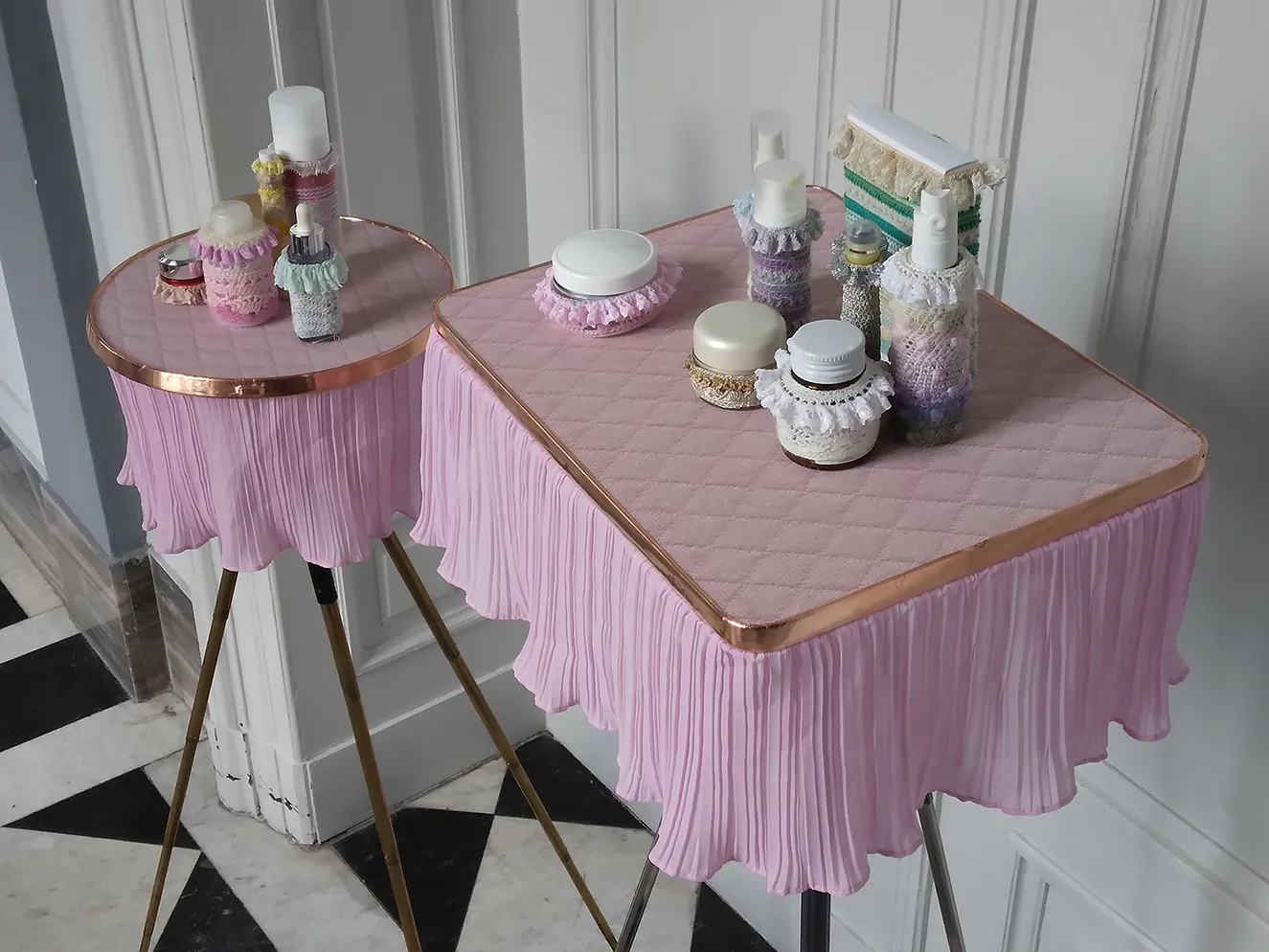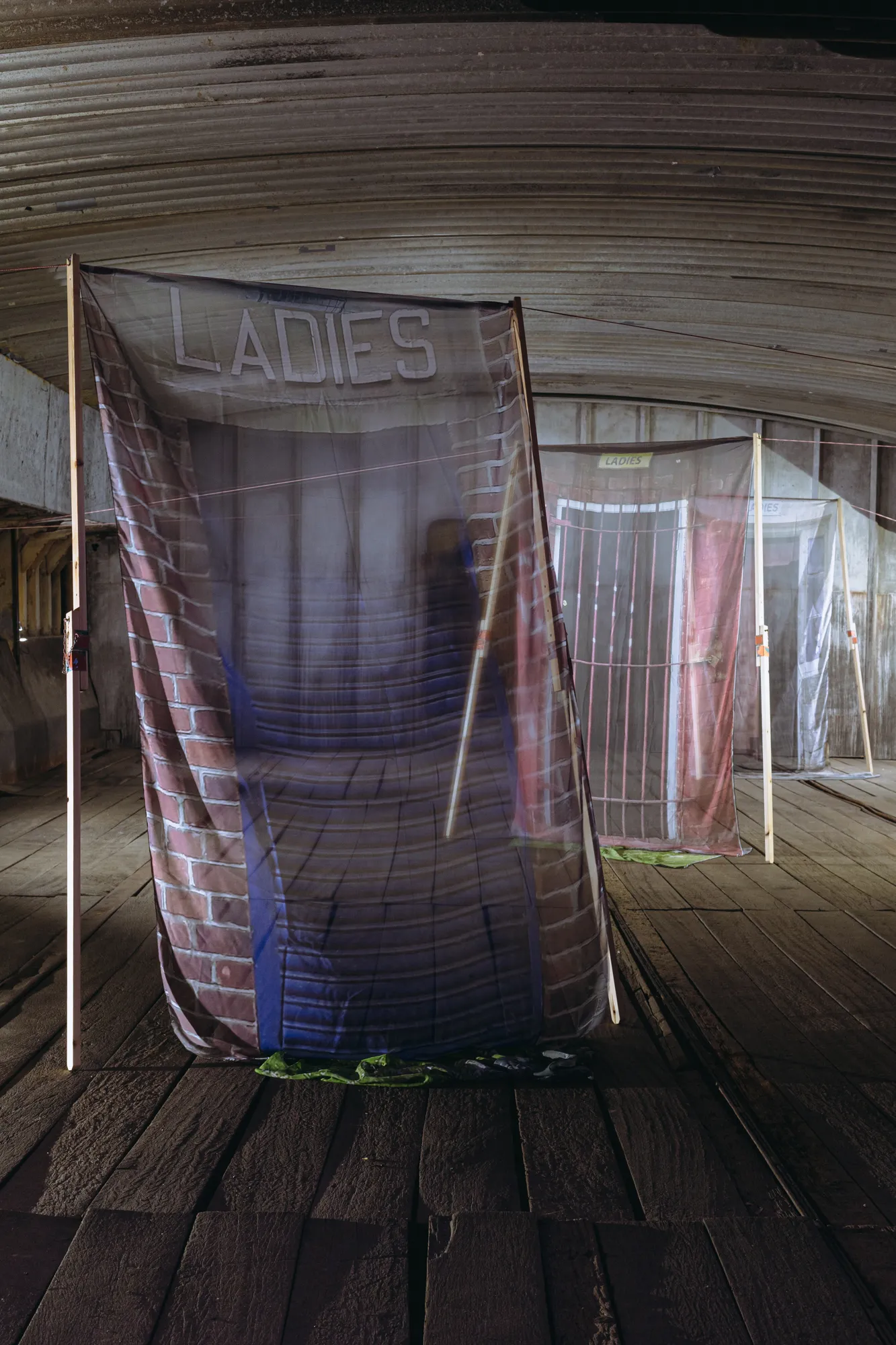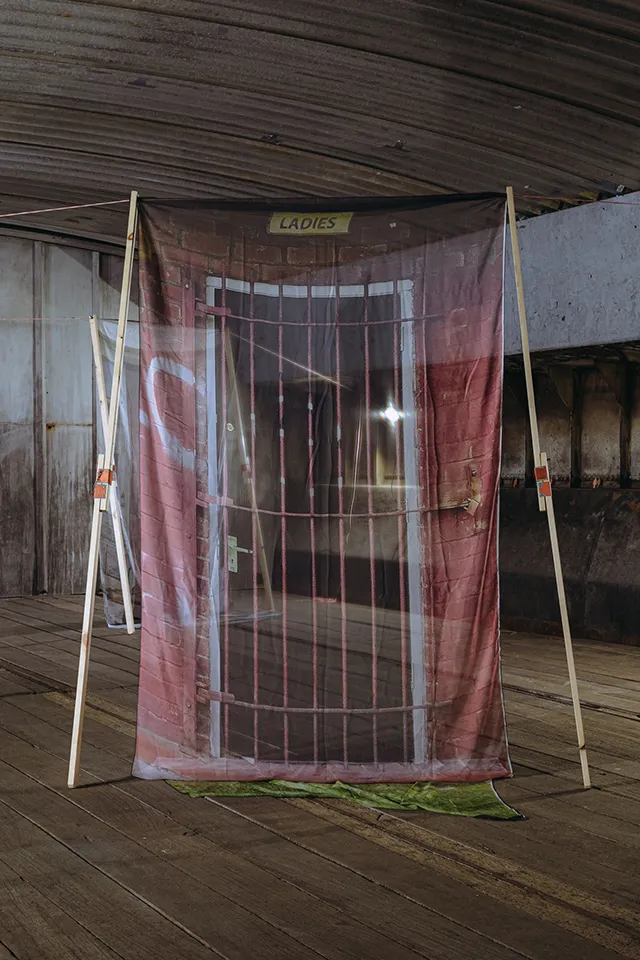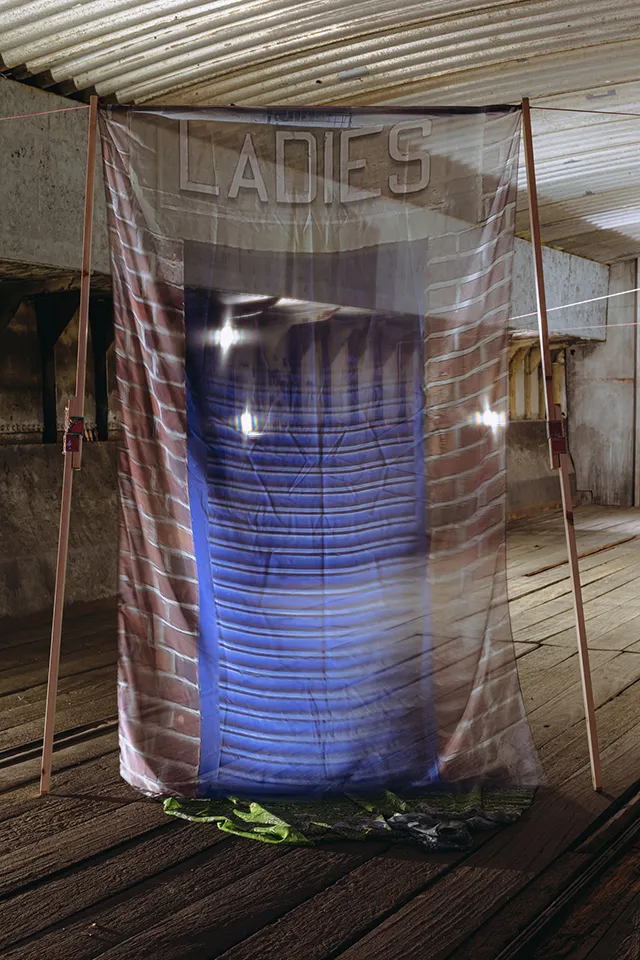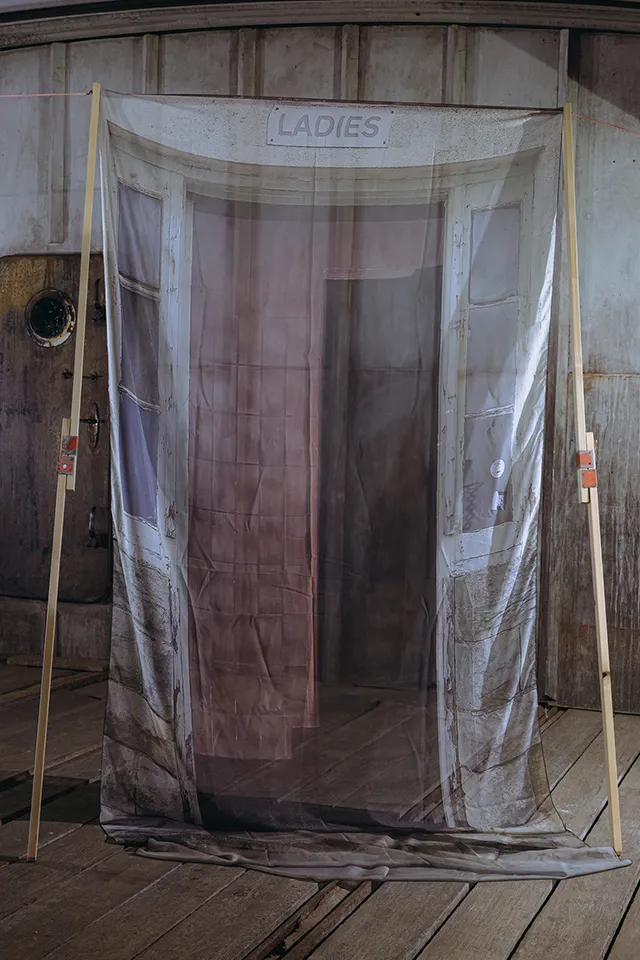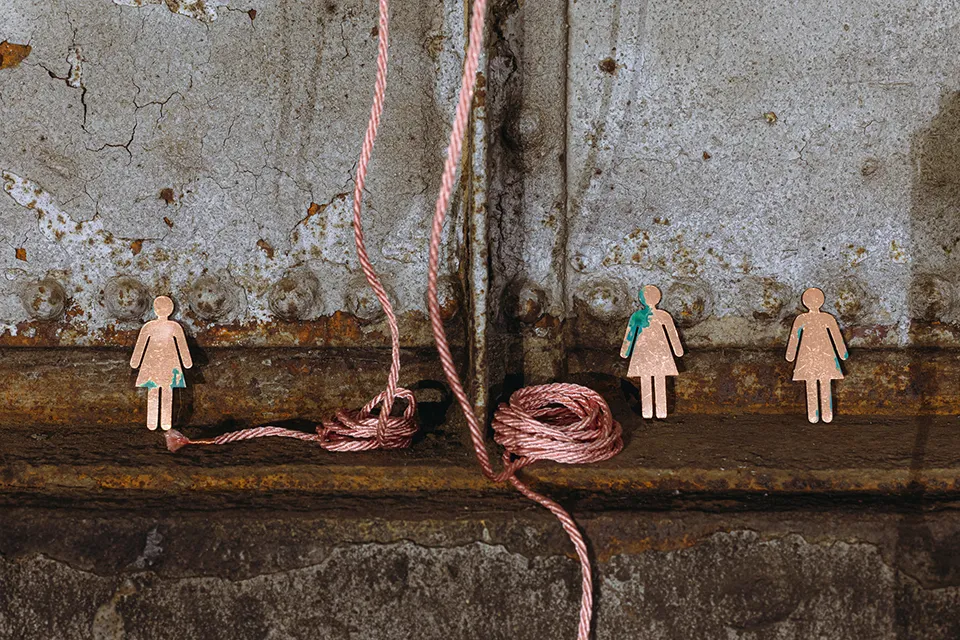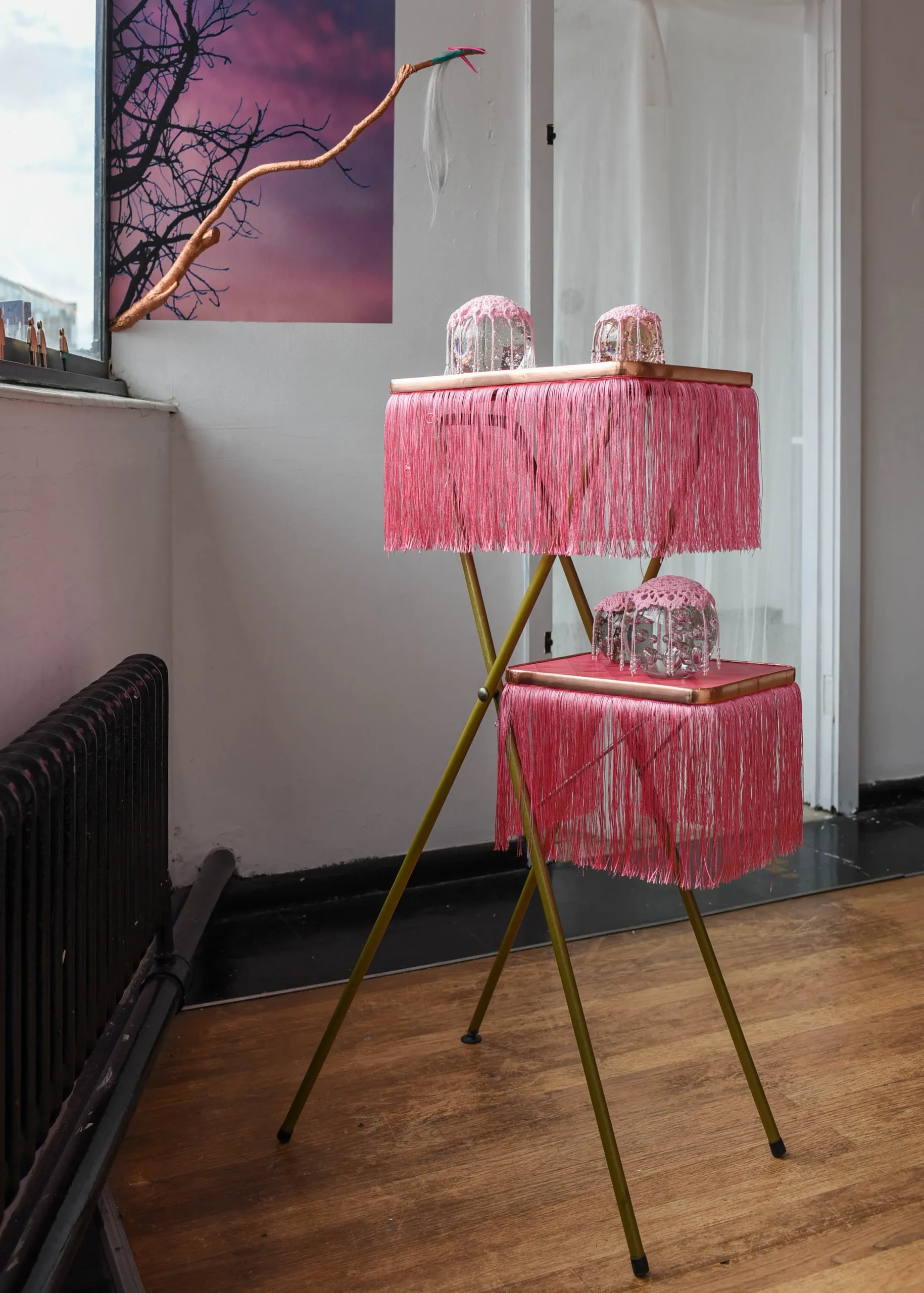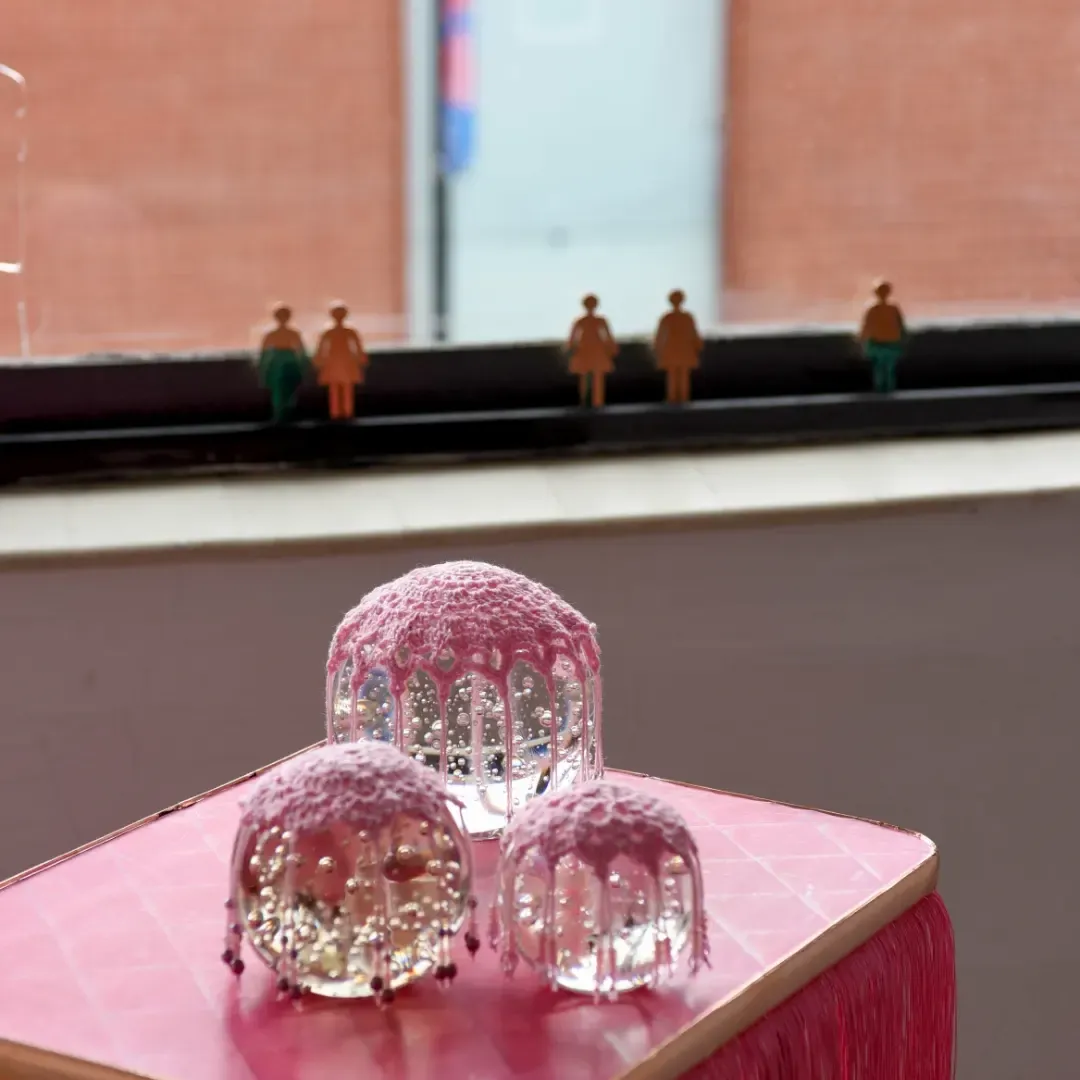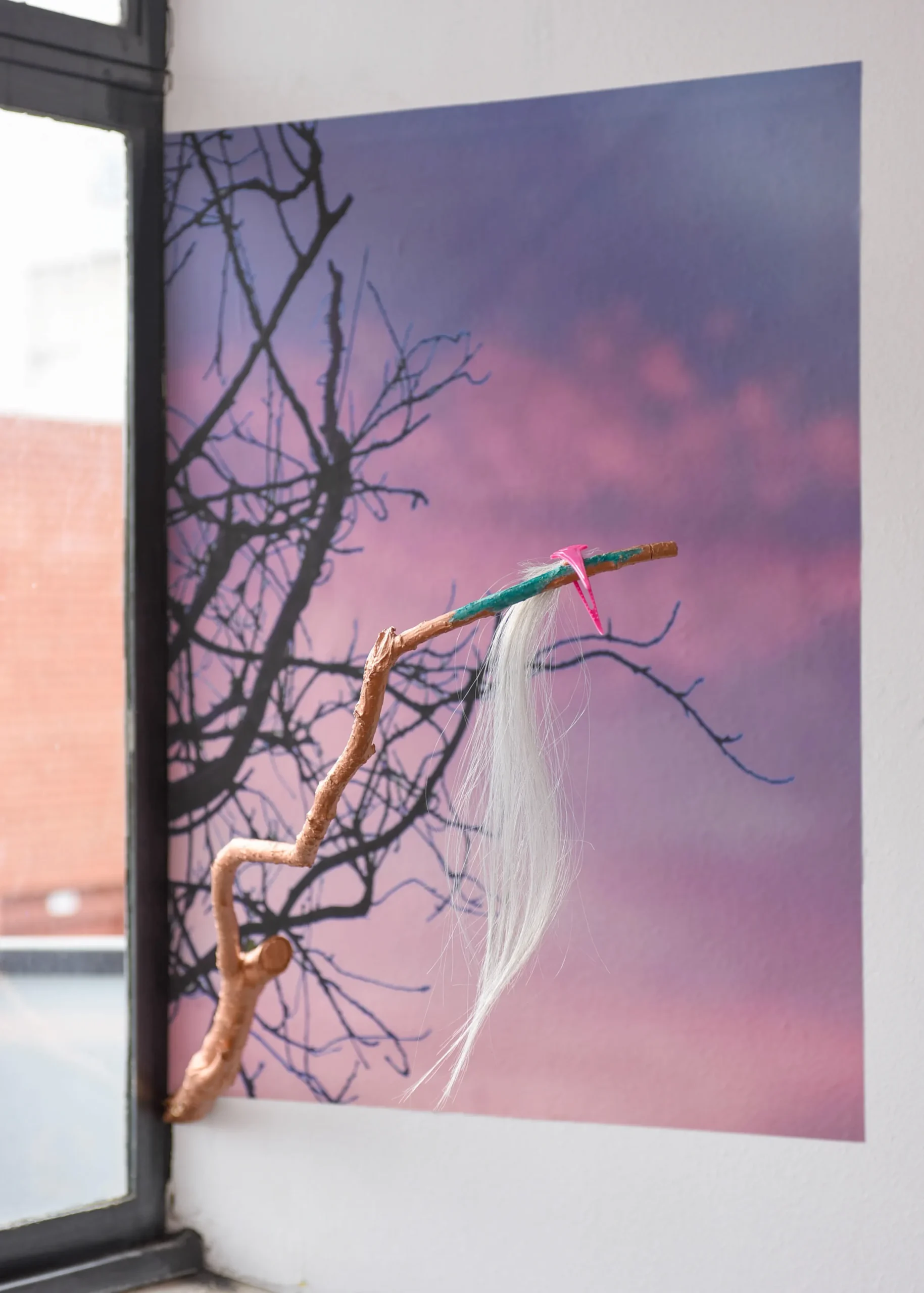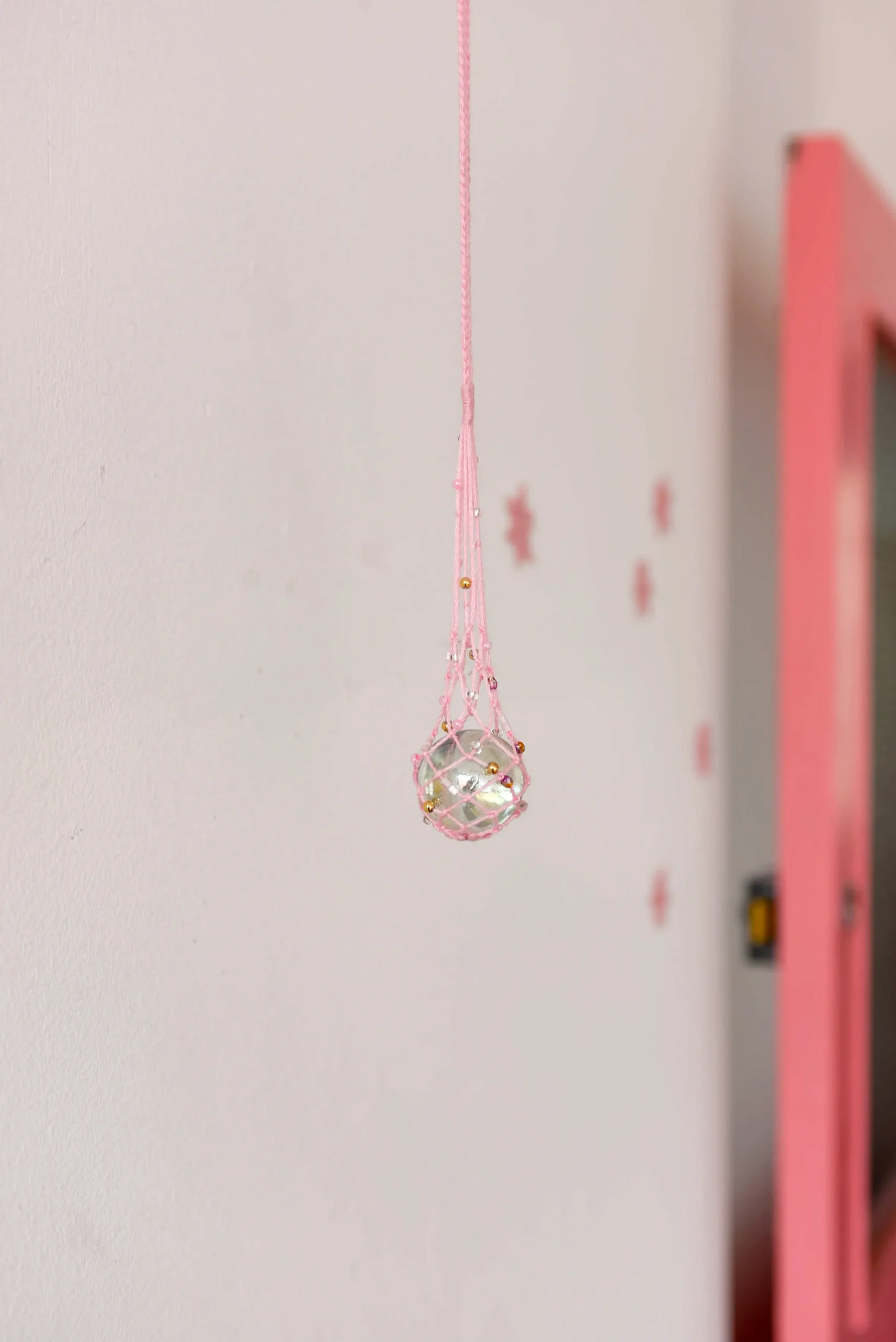Feral Interventions
For the three iterations of The Lost and Found symposium in Lisbon, Warsaw and Riga in 2024, I developed an art working strategy I thought of as feral interventions and travelled to these cities with artworks in my suitcase to install opportunistically in and around the symposium venues. As an art working strategy, these feral interventions are like sculptural field notes. They are a process of testing how the objects occupy space, how that relate to each other and their surroundings, and how various methods of display including the practicalities of installation can be negotiated in a limited time frame in a previously unknown location.
Feral interventions are a feminist art working strategy because they are peripheral, they take place physically in spaces that are neither inside nor outside the institution, and they materialise economically in the grey zone between work and not-work. Feral interventions trouble singular master narratives of what it means to produce and exhibit art works, employing instead a variety of conceptual, contextual, explanatory and physical tools. Understood in this context as a feminist position, feral interventions allow for evasion and unpredictability, for creative resistance to systems of control and for the potential to undertake adaptive art working strategies.
Feral interventions unsettle because they are in and of themselves unsettling. To be settled implies stability and domestic contentment, to be unsettled implies precarity, and movement beyond the domestic. To be unsettling is the process of causing anxiety or a sense of unease. The feral as a state of post-domestication unsettles because it exposes the ambivalence inherent in domesticity, that for some the domestic is a site of confinement, of physical and emotional labour undertaken by necessity, or even through force. “The term “feral” forces attention to what was once hidden in the gap between “wild” and “domestic””. Feral interventions also focus attention on the potential that improvisational strategies have beyond art working practices, how the agentic actions of humans and non-humans may have consequences beyond their original intentions.
